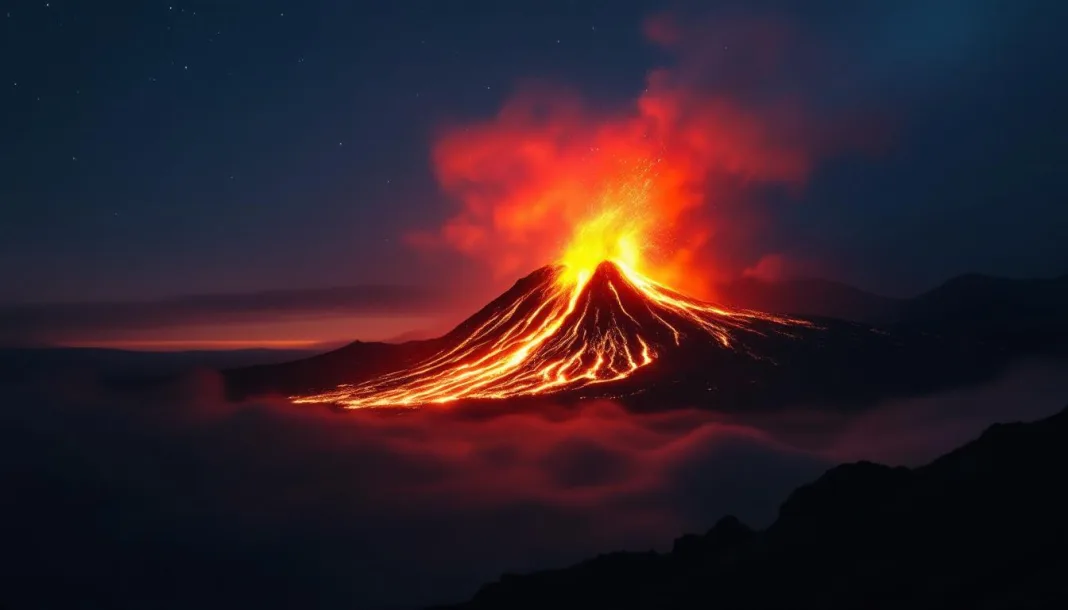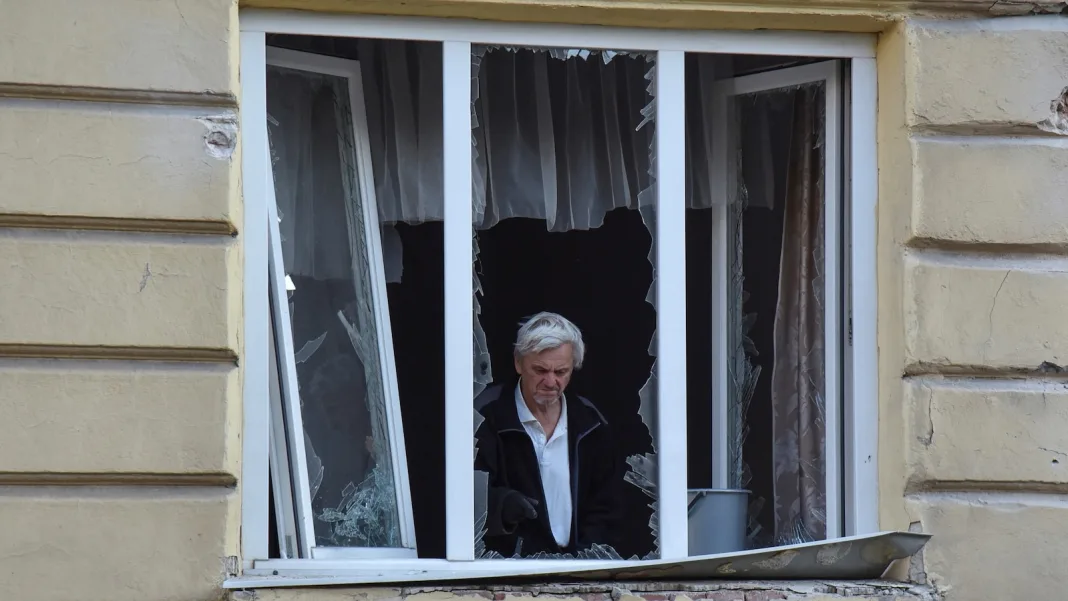Wednesday, July 16, 2025

In July 2025, Iceland’s Reykjanes Peninsula experienced yet another volcanic eruption, the twelfth in the region since 2021. This eruption, marked by the sudden appearance of a large fissure, has led to evacuations near key tourist destinations, including the famous Blue Lagoon geothermal spa. As columns of smoke and lava fountains illuminated the sky, local authorities took swift action to protect both residents and visitors, ensuring that safety remained the priority while the eruption continued.
Iceland, known for its dramatic volcanic landscapes, has long been a hotspot for travelers seeking unique geological experiences. However, with the frequent volcanic activity of the Reykjanes Peninsula, the country’s tourism sector is reminded of the delicate balance between awe-inspiring natural beauty and the inherent risks that come with such an unpredictable environment. In this article, we take an in-depth look at the latest eruption, its impact on the surrounding areas, and how travelers can stay informed and safe during their visit to this iconic destination.
Iceland’s Volcanic Eruption: What You Need to Know
On July 16, 2025, a fresh volcanic eruption on Iceland’s Reykjanes Peninsula caught global attention, especially due to its proximity to tourist hotspots like the Blue Lagoon. Here’s a breakdown of the key details:
- Eruption Details: The eruption, which started with magma breaking through the Earth’s crust, opened a fissure estimated between 700 and 1,000 meters long. This caused dramatic lava fountains and volcanic ash clouds visible across the region.
- Evacuations: Authorities swiftly evacuated tourists and locals from the immediate vicinity. This included visitors staying at the luxury Blue Lagoon resort, as well as those in nearby campsites and the town of Grindavík, which had already been partially evacuated in 2023 due to previous volcanic threats.
- Impact on Travel: Despite the intensity of the eruption, local officials confirmed that air traffic at Keflavik International Airport remained uninterrupted. Flights in and out of Reykjavik proceeded as scheduled, and there were no disruptions to the capital’s transport networks.
- Regional Risk Management: Iceland’s emergency services were prepared for such events, drawing on experience from previous eruptions in the region. Monitoring systems were quickly deployed, and local authorities continue to update travelers and residents with real-time safety advisories.
Why the Reykjanes Peninsula Keeps Erupting
The Reykjanes Peninsula, located just a short drive from Reykjavik, has become a focal point of volcanic activity. This region lies on the boundary between two tectonic plates, which results in frequent seismic events, including earthquakes and eruptions. Understanding the geological forces at play helps explain why eruptions occur so regularly here.
Key Geophysical Factors Contributing to the Activity:
- Tectonic Plate Boundaries: The Reykjanes Peninsula is located on the Mid-Atlantic Ridge, where the North American and Eurasian plates meet. This boundary is a hotspot for seismic activity, including volcanic eruptions.
- Volcanic Hotspots: Iceland itself sits atop a volcanic hotspot in the Earth’s mantle. The constant movement of magma below the surface increases the likelihood of eruptions, making the country one of the most active volcanic zones in the world.
Given these factors, it’s no surprise that Iceland has had several volcanic eruptions in recent years, making it an exciting yet risky destination for tourists.
Evacuations and Safety Measures
With the eruption occurring so close to highly visited sites like the Blue Lagoon, it was critical for authorities to implement evacuation measures immediately. The first areas affected were the Blue Lagoon’s luxury hotel complex and the nearby campsite. Visitors were quickly escorted to safety as emergency crews cordoned off the most dangerous zones.
Despite the dramatic nature of the eruption, local authorities have repeatedly emphasized that the volcanic activity does not present an immediate threat to most tourists, thanks to Iceland’s well-established safety protocols and rapid response teams.
Evacuation Highlights:
- Blue Lagoon Resort: Guests staying at the resort, renowned for its luxurious spa experiences, were among those evacuated to ensure their safety.
- Grindavík: The town of Grindavík, which has experienced significant disruption in the past due to volcanic activity, was re-evacuated. Nearly 4,000 residents were forced to leave in 2023, and the town remains largely deserted due to ongoing risks.
While these actions may disrupt tourism in the short term, they reflect the country’s robust disaster management system, designed to protect both locals and tourists alike.
Tourism Impact and Local Economy
While Iceland’s tourism industry remains resilient, the frequent eruptions in the Reykjanes Peninsula highlight the dynamic nature of travel in regions affected by volcanic activity. The eruption’s direct impact on tourism infrastructure has so far been minimal, thanks in part to swift evacuations and well-established emergency procedures. However, the long-term effects could include:
- Changes in Visitor Patterns: As the threat of eruptions continues, tourists may opt for other regions of Iceland, such as the Golden Circle or North Iceland, where volcanic activity is less pronounced.
- Increased Interest in Volcanic Tourism: Conversely, the frequent eruptions may continue to attract tourists eager to witness volcanic events. Iceland has built a reputation as a unique destination for those fascinated by geothermal activity, and the Reykjanes Peninsula offers one of the best places to experience nature’s power firsthand.
Is It Safe to Visit Iceland During Volcanic Eruptions?
Many travelers may be concerned about the safety of visiting Iceland during periods of volcanic activity. Fortunately, Iceland’s tourism infrastructure is built with safety in mind, and the country’s advanced monitoring systems ensure that visitors are kept well-informed. Travelers can reduce risks by following these guidelines:
- Stay Informed: Always check official updates from the Icelandic Meteorological Office and local authorities regarding volcanic activity.
- Follow Evacuation Orders: If you’re visiting an area affected by volcanic eruptions, adhere to evacuation orders and safety guidelines provided by local officials.
- Avoid Restricted Zones: Volcanic regions may have designated restricted zones. Stick to marked trails and avoid venturing into potentially hazardous areas.
- Plan for Flexibility: In case of sudden evacuations or changes in the situation, consider booking flexible accommodations and transport.
What’s Next for Iceland’s Volcanic Landscape?
As Iceland continues to experience volcanic activity, the Reykjanes Peninsula remains a focal point of global attention. Future eruptions are highly probable, but Iceland’s tourism infrastructure is designed to handle such events effectively. Travelers should take comfort in knowing that the country has the experience, technology, and expertise to keep them safe.
In the coming years, the continued eruption activity could further shape the country’s unique landscapes, offering new opportunities for volcanic tourism, including tours of new lava fields and hiking routes. For those drawn to the raw beauty of nature’s power, Iceland remains a top destination, with the added thrill of ever-changing, awe-inspiring landscapes.
Conclusion: Volcanic Eruptions and Safe Travel in Iceland
Iceland’s Reykjanes Peninsula eruption has once again highlighted the country’s dramatic volcanic activity and its ability to manage such natural events with efficiency. While volcanic eruptions may disrupt travel plans in the short term, Iceland remains a must-visit destination for those seeking unparalleled natural wonders. As always, staying informed, following safety guidelines, and respecting local authorities’ instructions are the best ways to ensure a safe and unforgettable experience in this breathtaking land of fire and ice.
For the latest updates and travel advisories, be sure to follow official channels and plan your Iceland adventure with safety in mind.







